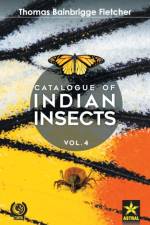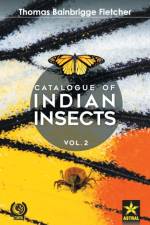av Thomas Bainbrigge Fletcher
2 981
The insects are the largest class in the animal world, out numbering of other animals. It is distributed throughout the world from the Polar Regions to the tropics and is found on land in fresh and salt water, and in salt lakes and hot springs. Insects represent over half of the planets biological diversity. Insects play a key role in our ecosystem. In India, there are large number of insects and it is very difficult to classify them correctly. The book entitled ""Catalogue of Indian Insects"" is divided into 5 volumes and covers 29 parts. Volume 1 deals with Part I to Part IX - Acrydidae, Culicidae, Bombyliidae, Trypetidae, Nitidulidae, Stapylinidae, Lasiocampidae, Amatidae and Zygaenidae. Volume 2 gives a detailed account of Part X to Part XVII - Stephanidae, Brenthidae, Tabanidae, Cicindelidae, Palpicornia, Cecidomyidae, Cosmopterygidae and Yponomeutidae. Volume 3 is devoted to Part XVIII - Carabidae. Volume 4 covers in detail of Part XIX to Part XXV - Gyrinoidea, Alucitidae, Lycidae, Phalonidae and Chlidanotidae, Chalcidoidea, Evanidae and Thysanoptera. Volume 5 of the book describes the Part XXVI to Part XXIX - Serphoidea, Isoptera, Anthribidae and Asilidae. This historical reproduction of the book fulfill this long felt needs of students, teachers, researchers engaged in the field of entomology, agriculture, ecology, fisheries, forestry, paleontology, zoology, botany, plant science, medical and veterinary science. It is hoped that this publication will be of immense value to naturalists, ecologists, environmentalists, garden specialist, forest officials, museum experts and extension workers.





